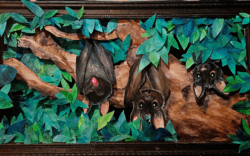It’s early October, and it seems like most of us are making plans for Halloween and all of the spooky season offerings. If you’re thinking of adding a cemetery visit to your checklist of Halloween activities, why not take a moment to look beyond the idea that cemeteries are just eerie, fog-covered and haunted spots depicted in an old Hammer horror movie? They’re also a glimpse into the past of the city of Athens and the residents within, and they come in a variety of styles with intriguing stories.
For example, Oconee Hill Cemetery near downtown Athens is an excellent example of a garden cemetery. These types of green cemeteries were considered the very first public parks in the United States, and they were created for those living just as much as they were for the dead. Oconee Hill Cemetery not only allowed burials for anyone in the community, but it also encouraged Athenians to visit the area by providing meandering paths to stroll, shady trees to picnic under, and a varied green landscape design that has profusions of flowers and shrubbery to admire. Garden cemeteries like this also tend to be rich in Victorian Era architecture and trends such as floriography, symbolism and grandiloquent epitaphs, and Oconee Hill Cemetery is nationally recognized as an illustrious example of all of these things.
In the oldest sections you’ll find names that are very familiar to an Athens dweller such as Lumpkin, Barrow and Aderhold. Crawford Long, the inventor of anesthesia, and Ben Epps, the first to build and fly an airplane in Georgia, are also buried here.
While the newer sections beyond the river aren’t as ornate, they are still no less important. Here you’ll find the grave of Ricky Wilson. Wilson was a founding member of the B-52’s, and his pyramid shaped grave still sees a steady stream of visitors who leave retro-themed tokens, like mini lava lamp keychains, in his honor.
Did you know that Sanford Stadium, located right across the street from Oconee Hill Cemetery, is a cemetery of sorts, as it has a one-of-a-kind mausoleum beneath its stands? It’s no secret that everyone who likes college football is familiar with UGA’s cute and wrinkly English bulldog mascot Uga. We’re now at number 11 (XI) in the lineage, and for those wondering what happened to Ugas 1–10 after they passed on, the answer is that they’re buried in a wall mausoleum close to Gate 9 of the stadium. While alive the bulldogs enjoy an air-conditioned dog house, custom-made jerseys and a pampered lifestyle. In death each has a specialized epitaph plaque placed on their marble tombs. They read the specific name and dates of each Uga as well as their monikers like “Damn Good Dog” and “A Big Dog For A Big Job, And He Handled It Well.”
UGA is the only major college that buries its mascot within the boundaries of a stadium. Thousands of visitors visit the tombs every year and often leave grave goods such as dog treats and other trinkets. Before each home game there are flowers laid at the tomb by the university to honor the spirit of the dogs… and the Dawgs.
Near Clarke Middle School, you will find Athens’ oldest African-American cemetery, Brooklyn Cemetery. This was the final resting place for the local Black community of the Brooklyn/Hawthorne area and beyond. The first burials took place in the 1880s and the cemetery, called Bethlehem Cemetery at the time, grew rapidly and remained active until the 1950s. After that time the burials began to slow, and the land fell into a state of neglect. Recent efforts of The Friends of Brookly Cemetery have seen that change as the cemetery has been mostly cleared and lost plot restoration has begun. In the last decade over 1,100 graves have been identified and marked, and unique gravestones have been uncovered.
One of those unique gravestones was crafted by Atlanta outsider artist Eldren E.M. Bailey. Bailey was a prolific outsider artist who created yard art, structural art within his home, and, of course, gravestones for all African American communities across the state of Georgia. His work includes a hand-lettered plaster front inscribed with symbols from across the world with the honorific “Mr.,” “Mrs.,” and “Miss” as a way to show respect to the deceased. Historically, the Black community was never allowed to use those honorifics, so Bailey was sure to include them on every stone he crafted.
In the spirit of keeping it local, it’s also important to note that Brooklyn Cemetery’s west side entrance now boasts an ornate gate created by the renowned Athens metal sculptor Harold Rittenberry. Dedicated in 2017, the gate is interwoven with a number of images that symbolize differing stories. You’ll see a tree for knowledge and life, birds ascending for freedom and transition, and much more. Rittenberry’s work for the cemetery has special meaning since he often played in the cemetery as a child.
As you can see, cemeteries and mausoleums can be much more than a spooky location or somber place. They are historical and cultural landmarks of Athens, and they’re full of life in their own ways. Explore one of the 83 local cemeteries and learn more about the people, or even pets, within.
There is a self-guided tour map for Oconee Hill Cemetery at oconeehillcemetery.com/visits and virtual tours at oconeehillcemetery.online/videos/virtual-tours. Brooklyn Cemetery hosts volunteer cleanup days every MLK Day where you can join others as they care for this historic Athens cemetery. Additionally, Brooklyn Cemetery has a Heritage Hunt interactive PDF at brooklyncemetery.org/heritage-hunt that you can share with your fellow explorers.
Like what you just read? Support Flagpole by making a donation today. Every dollar you give helps fund our ongoing mission to provide Athens with quality, independent journalism.










